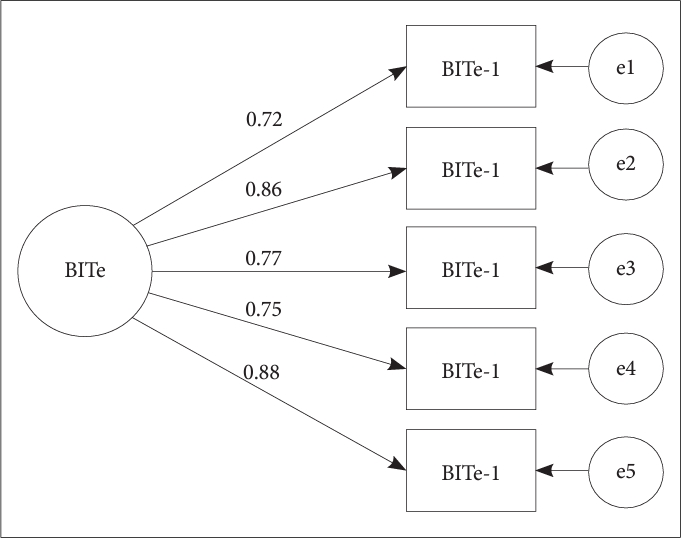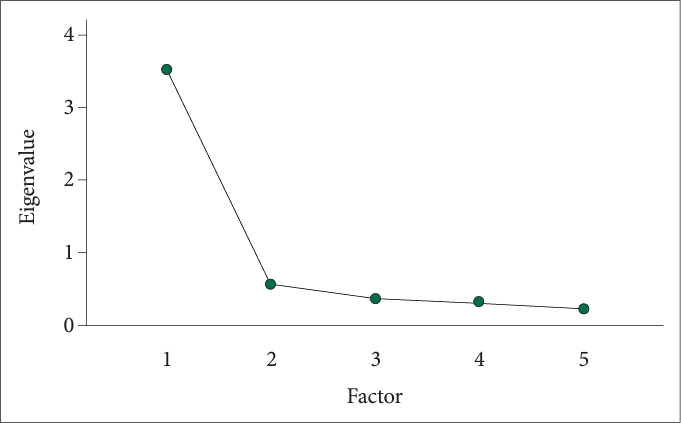1. Born L, Steiner M. Irritability: the forgotten dimension of female-specific mood disorders. Arch Womens Ment Health 1999;2:153-167.


2. Craig KJ, Hietanen H, Markova IS, Berrios GE. The irritability questionnaire: a new scale for the measurement of irritability. Psychiatry Res 2008;159:367-375.


3. Snaith RP, Taylor CM. Irritability: definition, assessment and associated factors. Br J Psychiatry 1985;147:127-136.


6. Toohey MJ, DiGiuseppe R. Defining and measuring irritability: construct clarification and differentiation. Clin Psychol Rev 2017;53:93-108.


7. American Psychiatric Association. Diagnostic and statistical manual of mental disorders, fifth edition (DSM-5). Arlington: American Psychiatric Association; 2013.
8. Mangelli L, Fava GA, Grassi L, Ottolini F, Paolini S, Porcelli P, et al. Irritable mood in Italian patients with medical disease. J Nerv Ment Dis 2006;194:226-228.


11. Pickles A, Aglan A, Collishaw S, Messer J, Rutter M, Maughan B. Predictors of suicidality across the life span: the Isle of Wight study. Psychol Med 2010;40:1453-1466.


13. Stringaris A, Goodman R. Longitudinal outcome of youth oppositionality: irritable, headstrong, and hurtful behaviors have distinctive predictions. J Am Acad Child Adolesc Psychiatry 2009;48:404-412.


14. Seroczynski AD, Bergeman CS, Coccaro EF. Etiology of the impulsivity/aggression relationship: genes or environment? Psychiatry Res 1999;86:41-57.


15. Jha MK, Minhajuddin A, South C, Rush AJ, Trivedi MH. Irritability and its clinical utility in major depressive disorder: prediction of individual-level acute-phase outcomes using early changes in irritability and depression severity. Am J Psychiatry 2019;176:358-366.


17. First MB, Williams JBW, Karg RS, Spitzer RL. Structured clinical interview for DSM-5 disorders—clinician version (SCID-5-CV). Arlington: American Psychiatric Association; 2016.
18. Patton JH, Stanford MS, Barratt ES. Factor structure of the Barratt Impulsiveness Scale. J Clin Psychol 1995;51:768-774.


19. Heo SY, Oh JY, Kim JH. [The Korean version of the Barratt Impulsiveness Scale, 11th version: its reliability and validity]. Kor J Psychol Gen 2012;31:769-782. Korean.
20. Beck AT, Epstein N, Brown G, Steer RA. An inventory for measuring clinical anxiety: psychometric properties. J Consult Clin Psychol 1988;56:893-897.


21. Lee HK, Lee EH, Hwang ST, Hong SH, Kim JH. Psychometric properties of the Beck Anxiety Inventory in the community-dwelling sample of Korean adults. Kor J Clin Psychol 2016;35:822-830.

22. Beck AT, Steer RA, Brown G. Manual for Beck Depression Inventory-II. San Antonio: Psychological Corporation; 1966.
23. Lim SU, Lee EH, Hwang ST, Hong SH, Kim JH. The Beck Depression Inventory-second edition: psychometric properties in Korean adult populations. Kor J Clin Psychol 2019;38:300-307.

24. Spielberger CD, Krasner SS, Solomon EP. The experience, expression, and control of anger. In: Janisse MP, editor. Individual differences, stress, and health psychology. New York: Springer, 1988, p. 89-108.
25. Chon KK, Kim DY, Yi JS. [Development of the STAXI-K: IV]. Korean J Art Ther 2000;7:35-50. Korean.
26. Kaiser HF. An index of factorial simplicity. Psychometrika 1974;39:31-36.


27. Kline RB. Principles and practice of structural equation modeling. 4th ed. New York: Guilford Press; 2015.
28. MacCallum RC, Browne MW, Sugawara HM. Power analysis and determination of sample size for covariance structure modeling. Psychol Methods 1996;1:130-149.

29. Hu LT, Bentler PM. Cutoff criteria for fit indexes in covariance structure analysis: conventional criteria versus new alternatives. Struct Equ Model 1999;6:1-55.

30. Kenny DA, Kaniskan B, McCoach DB. The performance of RMSEA in models with small degrees of freedom. Sociol Methods Res 2015;44:486-507.


31. Cortina JM. What is coefficient alpha? An examination of theory and applications. J Appl Psychol 1993;78:98-104.

32. Pallant J. SPSS survival manual: a step by step guide to data analysis using IBM SPSS. 7th ed. London: Routledge; 2020.
33. Cristobal E, Flavian C, Guinaliu M. Perceived e-service quality (PeSQ): measurement validation and effects on consumer satisfaction and web site loyalty. Manag Serv Qual 2007;17:317-340.
35. Sukhodolsky DG, Scahill L. Cognitive-behavioral therapy for anger and aggression in children. New York: Guilford Press; 2012.
39. Zhan N, Zhang L, Gong M, Geng F. Clinical correlates of irritability, anger, hostility, and aggression in posttraumatic stress disorder. Psychol Trauma 2023;Apr 27 [Epub].
https://doi.org/10.1037/tra0001498.












